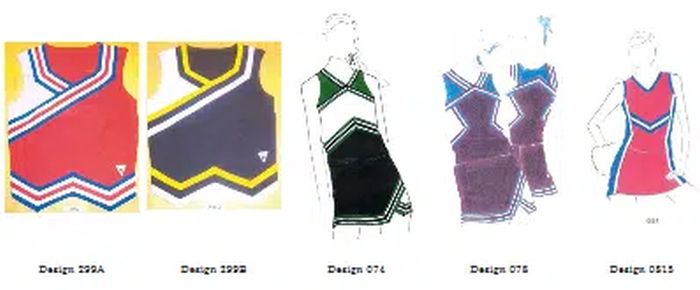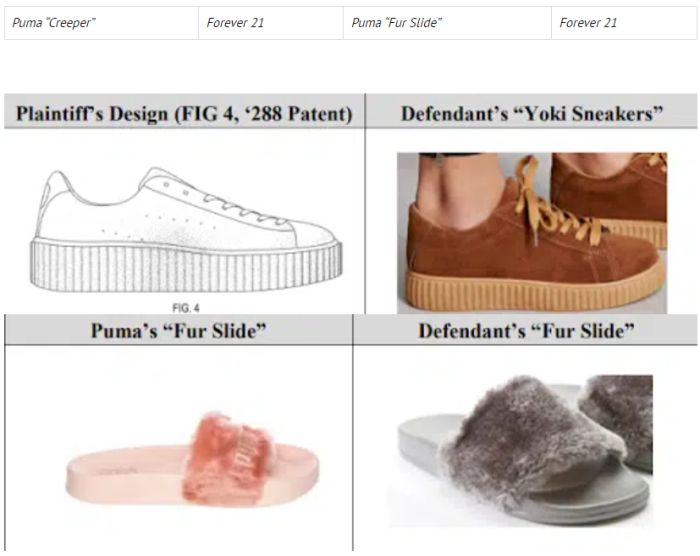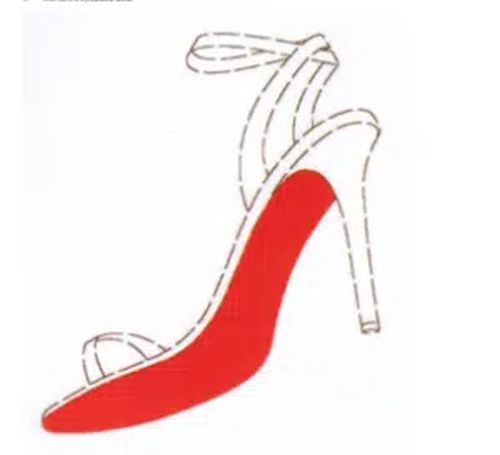- with readers working within the Healthcare industries
I. INTRODUCTION
Designs are under protection by various legislations and international agreements both in Turkish Law and in the laws of almost every country such as the European Union ("EU") and the United States of America ("USA"). However, the legislation and precedent of these countries do not include specific regulations regarding fashion designs created in the fashion sector, which has its unique dynamics, and therefore are frequently criticised for not offering full protection to designers.
Since the legal protection of designs in the fashion industry contributes to the development of a dynamic industry based on visual design, which plays an important role in international markets by encouraging creativity and innovation, it is crucial to determine the criteria that which designs can be considered as "original" and benefit from the intellectual property protection provided for designs.
II. CRITERIA OF ORIGINALITY OF DESIGNS AND VIOLATIONS OF DESIGN RIGHTS
a. Assessments regarding the EU and US Law
Pursuant to Article 5 of the Regulation No. 6/2002 of the EU Law regulating the protection of community designs, designs shall be deemed to be new only if the same design has not been presented to the public before and the similarity between the designs shall be assessed on the basis that the designs differ only in insignificant details. Furthermore, Article 6 of the same regulation states that in order for designs to be considered as new or original, they must differ significantly from previously created designs or from the specific features of the design.
Although criteria that should be met for determining the originality of a design have been specified by various legislations, in practice, the boundaries of the distinctive nature of fashion designs created in conjunction with the functional features of a product are often not clearly defined, and therefore claims of famous designers having their designs copied are frequently argued before the courts.
In the Star Athletica, LLC v. Varsity Brands, Inc. case, which constitutes a precedent decision regarding design right infringements, Varsity Brands alleged that the cheerleading uniforms which Varsity Brands claimed were distinguished from other uniforms by lines, stripes and other aesthetic elements, were used by Star Athletica, whereas Star Athletica argued that the elements highlighted by Varsity Brands as distinctive did not have an independent function, and that the lines, stripes and other design elements served both a functional necessity and an informative purpose. In other words, the elements claimed as distinctive could not be protected as a design since they did not have any aesthetic value independent from the uniform.

Star Athletica, L.L.C. v. Varsity Brands, Inc., 137 S. Ct. 1002 (2017).
In response to the assessment of the Court of First Instance that Star's use was unfair because the uniform designs were an integral part of the uniform, the Court of Appeal, as a result of its examination, estalished the so-called "useful article" doctrine, and with this doctrine, in order for the designs to be protected under copyright, the functional aspects of the design must be able to be distinguished from the aesthetic elements, and ruled the precedent that the "two-step test" method should be applied in the assessment of whether the designs are similar or not.
Accordingly, a feature included in the design of a "useful article" would be entitled to copyright protection if;
- it can be considered as a two- or three-dimensional work of art that can be perceived separately from the "useful article",
- when visualised separately from the "useful article", it is capable of being protected as a painting, graphic or sculpture.
Under these criteria, the Court of Appeal reversed the decision of the Court of First Instance and held that the specific features of the design may be entitled to copyright even if those designs are not separable from the "useful article".
This precedent decision of the Court of Appeal was also the subject of a review in Puma v Forever 21 case brought before the Court by Puma against Forever 21 for allegedly counterfeiting Puma's famous "Crepeer" and "Fur Slide" shoes.

Inc. – No. CV17-2523 PSG Ex, 2017 U.S. Dist. LEXIS 211140 (C.D. Cal. June 29, 2017)).
In this case, Puma claimed that both models of shoes were distinguished from many other shoes in the market by elements such as the sole, texture and design; whereas Forever 21 claimed that those designs were not subject to copyright. In opposition to Forever 21's claims, Puma asserted that a "loosely tied satin bow" on the sole of a shoe could be perceived as a two- or three-dimensional work of art separate from the shoes and could be described as a protectable painting, graphic or sculpture in its own right or in another realm of tangible expression by citing the methods in Star Athletica, LLC v. Varsity Brands, Inc. Since the parties had reached an out-of-court agreement, the "useful article" method has not been examined in the aforementioned case, but this method has affected many cases in terms of the assessment of the distinctive character of the design.
The most well-known and most controversial example of design right infringement is Christian Louboutin's red-heeled shoe design. In the case filed against Van Haren for allegedly copying Christian Louboutin's iconic design, the Court of Justice of the European Union evaluated whether the "red sole" has a referencing function and decided that Van Haren's designs are infringing Christian Louboutin's designs on the grounds that "red soles" element was not a feature required by the nature of the product and that shoes with "red soles" had a referencing function for the Christian Louboutin brand.

CJEU, C-163/16, 12.06.2018
However, in the case of Christian Louboutin v Yves Saint Lauren, heard in the US Courts, Christian Louboutin sued Yves Saint Lauren on the grounds that Yves Saint Lauren's monochrome red shoes copied its red soled shoes, which were considered to have acquired a distinctive character as a result of widespread use;, the Court of Appeal rejected Christian Louboutin's claims on the grounds that the "red sole" element cannot be protected as an aesthetic element independent from the shoes, that the distinctiveness created by Louboutin on shoes can only be achieved if the shoe and the sole are designed in a way to create contrast and since there is no contrast between the shoes and the sole in the design subject to the case and that the shoes are designed to be monochrome red, Court ruled that Yves Saint Lauren may continue to produce shoes with a non-contrasting design.
b) Assessments regarding the Turkish Law
Pursuant to the Law No. 5846 on Intellectual and Artistic Works ("LIAW"), fashion designs are considered as a work defined as "all kinds of intellectual and artistic works that bear the characteristics of their owner and are considered as works of science and literature, music, fine arts or cinema" and are considered as "fine artistic works" pursuant to Article 4 of the LIAW. It can be said that for the intellectual property rights protection of a design, it must possess distinctiveness or peculiarity characteristic to its creator. Although the wording of the relevant law does not explain what should be understood by the concept of "the characteristic of the owner", it is accepted that this element expresses the creative intellectual effort and novelty of the owner of the work. However, since fashion designs are considered as "work of fine art" pursuant to the LIAW, in addition to these conditions, the design must also have "aesthetic value".
In this framework, to qualify a fashion design as a work of fine art, the product must be a product that is far from simple creations, beyond daily and normal use, created as a result of an artistic activity rather than a functional purpose, with the aim of appealing to the aesthetic sense and with a high artistic characteristic. In other words, clothing with a design that is standard, suitable for the function and quality of the product will not be considered as a "work of fine art", but clothing designs with aesthetic value will be able to benefit from intellectual property protection.
In the decision of the Court of Cassation on this matter, it was stated that the fact that the product subject to a fashion design is put on the market with a well-known brand or without a brand, that it is different from previous fashion designs, that its price is very high or low will not be important in terms of the quality of a work of fine art; and in the evaluation of whether the fashion design has the quality of a work of art, the criterion must be based on whether it has "a high level of aesthetic quality that exceeds the purpose of commercial use through mass production and has been created to create a sense of spectacle far beyond its functional feature" or not.
III. CONCLUSION
In the assessments of design infringement developed by case law under EU and US law, the following issues are generally examined: (i) whether the design has a characteristic that distinguishes it from others and ensures its distinctive characteristic; (ii) whether the distinctive element is protectable independently of the design itself; and (iii) whether the product has the reference function independently from the qualities it should have due to its nature.
In Turkish law, fashion designs are protected under the LIAW, and it is stipulated that fashion designs that (i) bear the characteristics of the owner, (ii) have aesthetic value, and (iii) present an original creation by becoming independent from its functional function may benefit from intellectual property protection.
However, the lack of specific regulations on fashion designs has created many discussions regarding the originality of designs, especially in the US and EU law, and the judgements rendered in this regard have been criticized by designers in the industry. In this context, the necessity to evaluate the originality of designs more effectively in legal protection processes reveals the need for special regulations that can support sustainable creativity and fair competition in the fashion industry.
The content of this article is intended to provide a general guide to the subject matter. Specialist advice should be sought about your specific circumstances.



